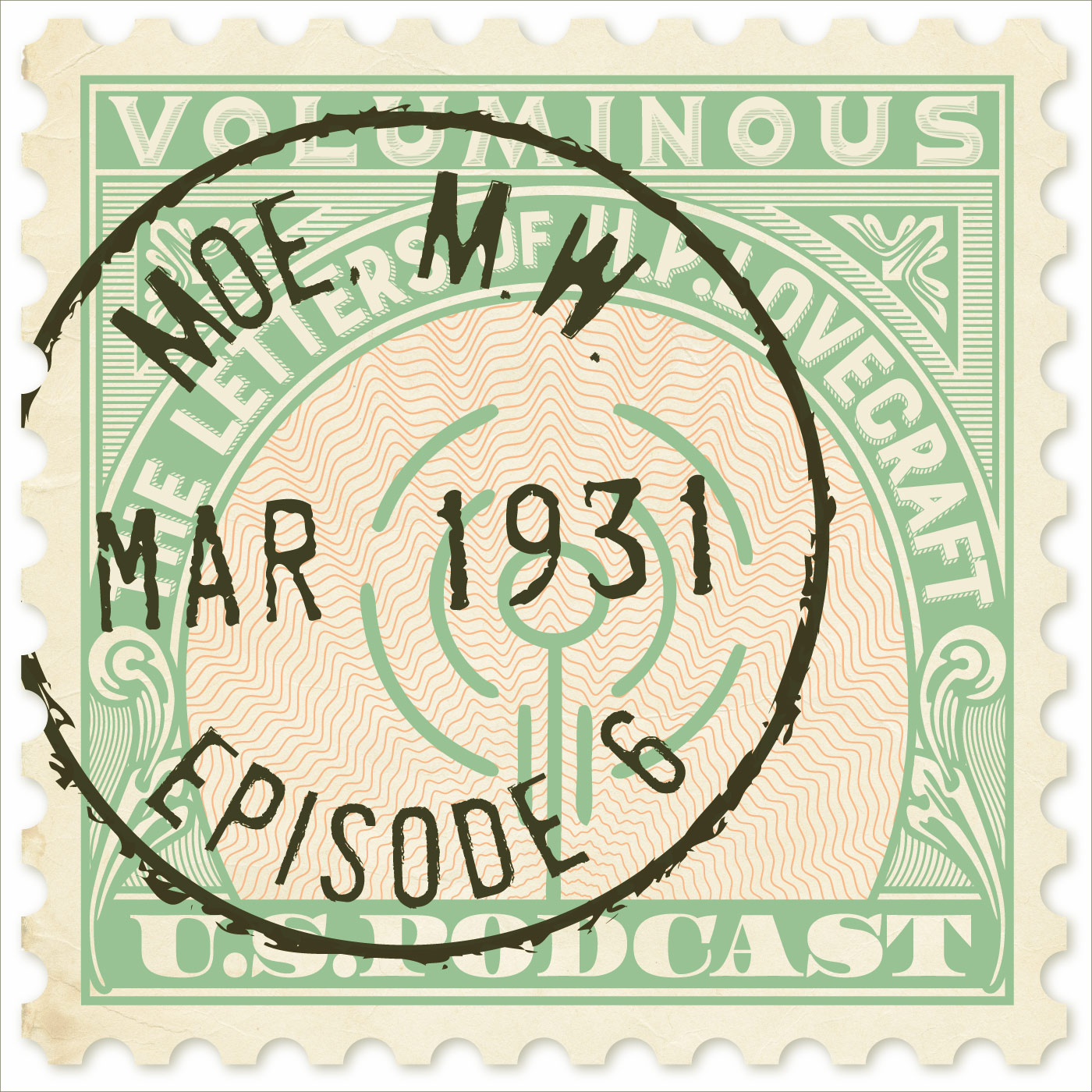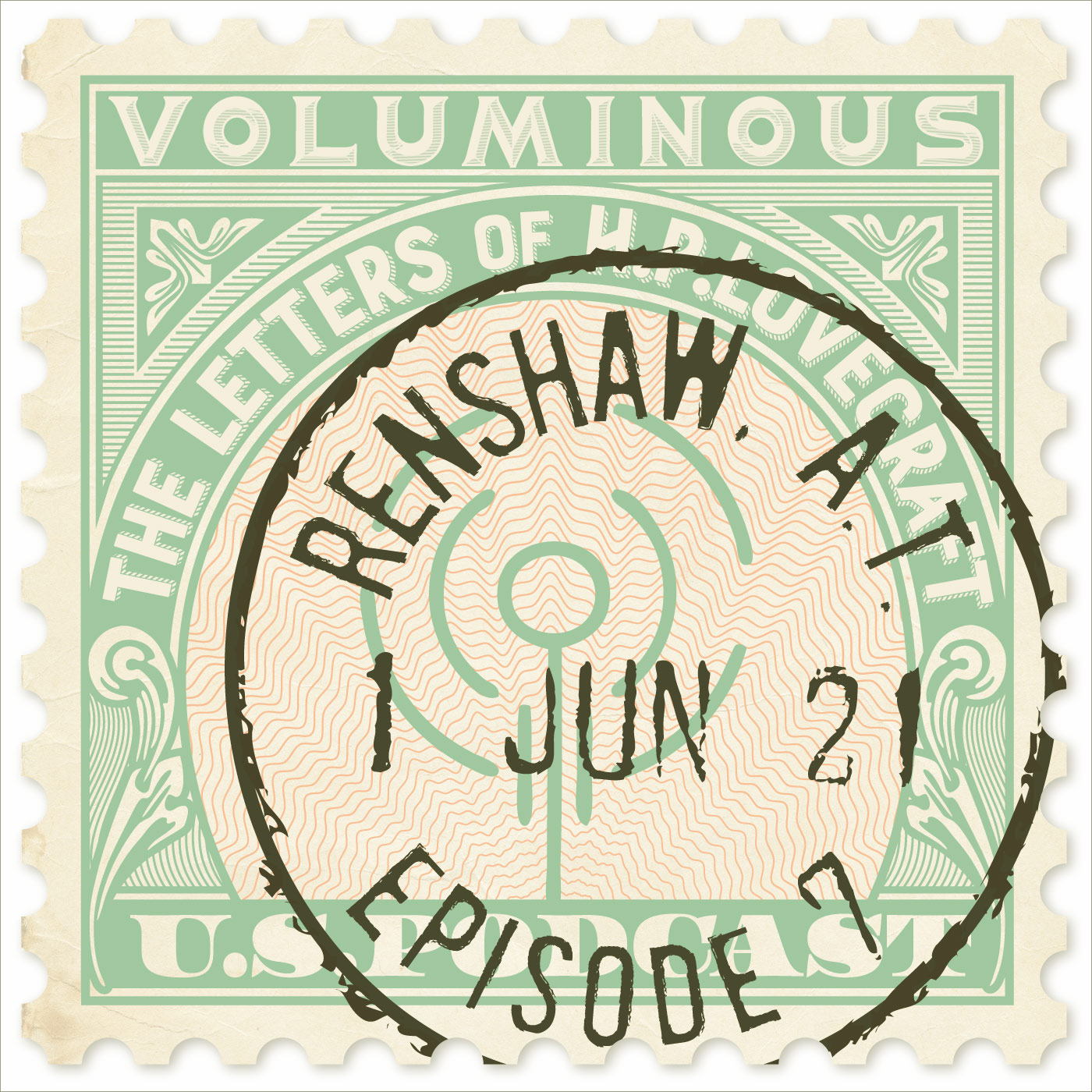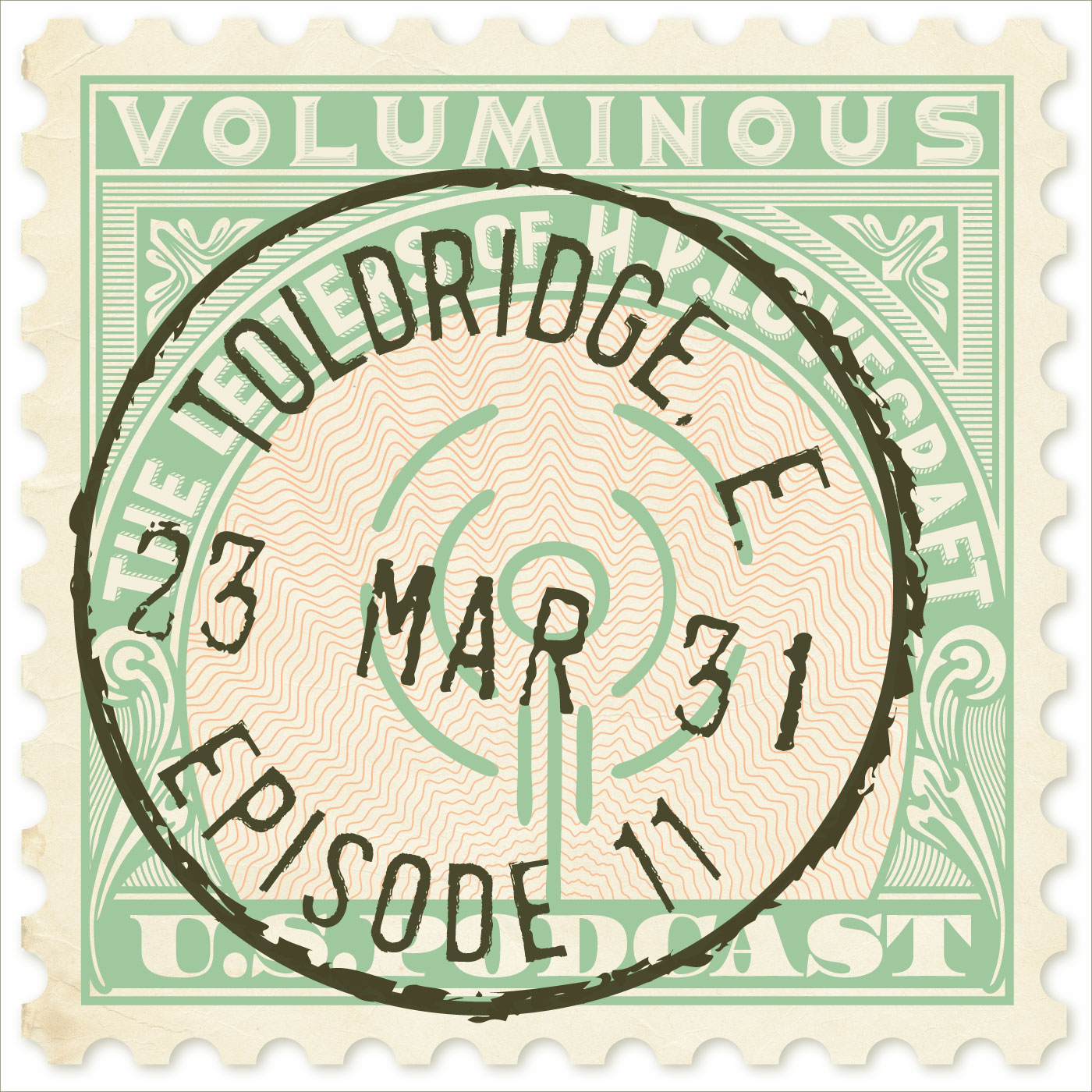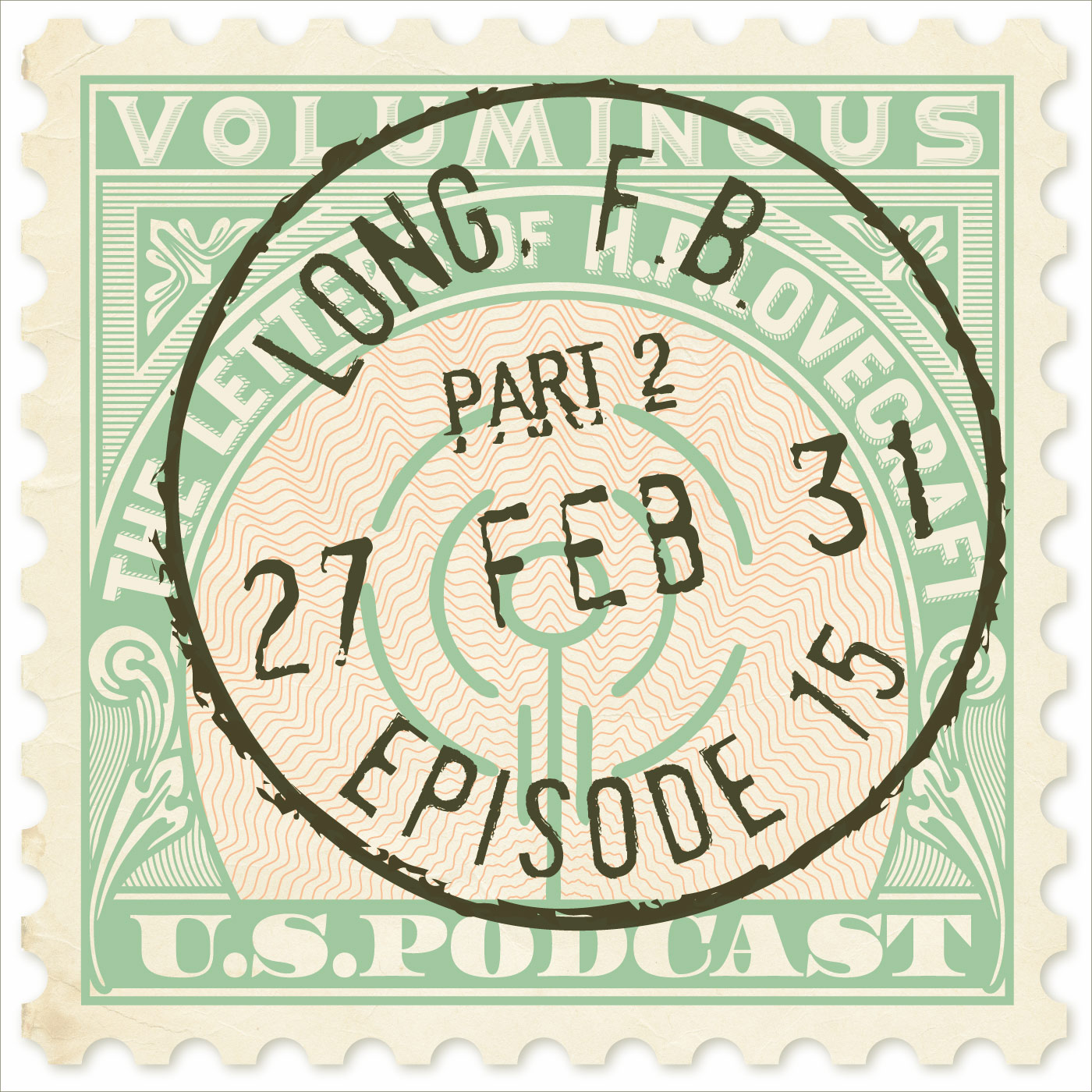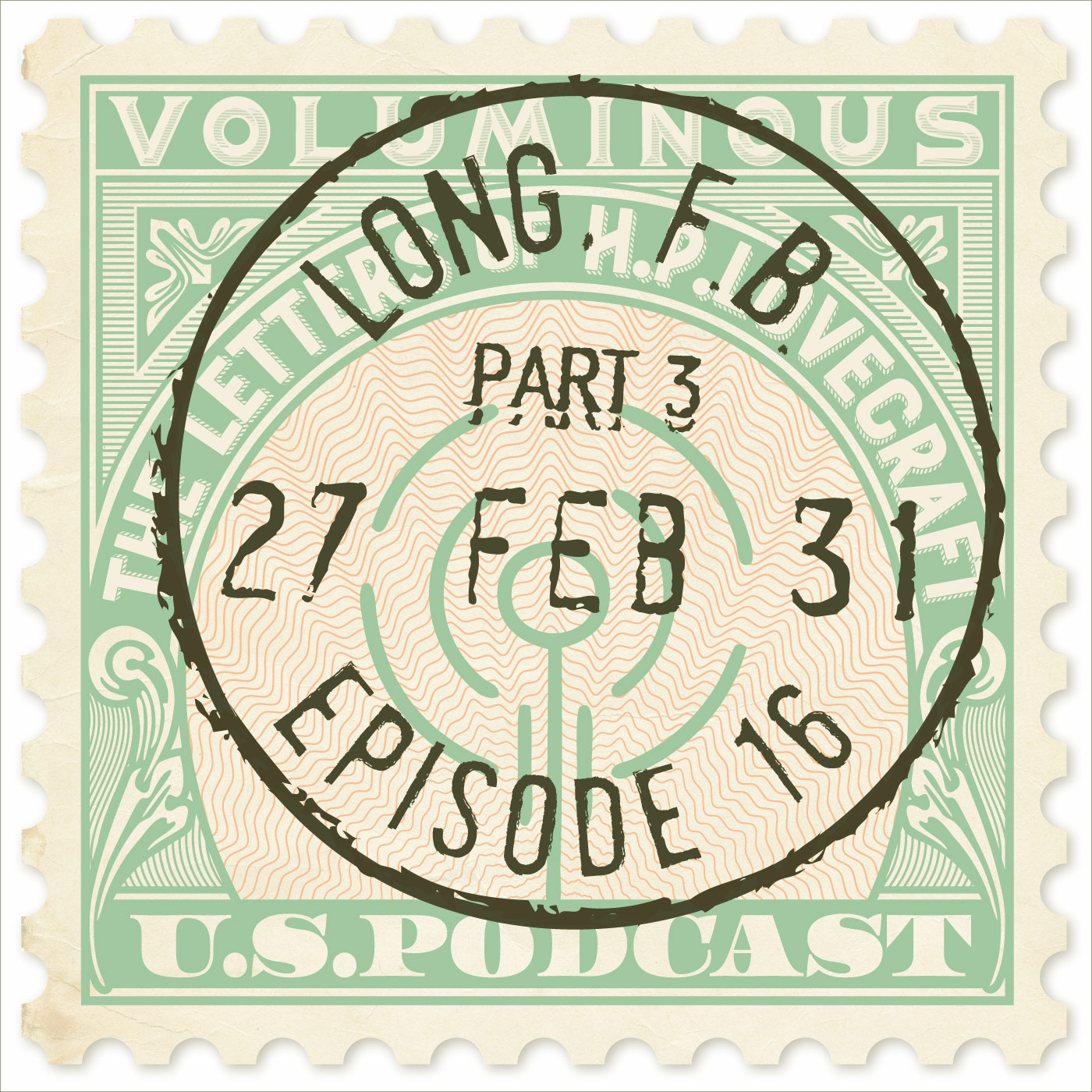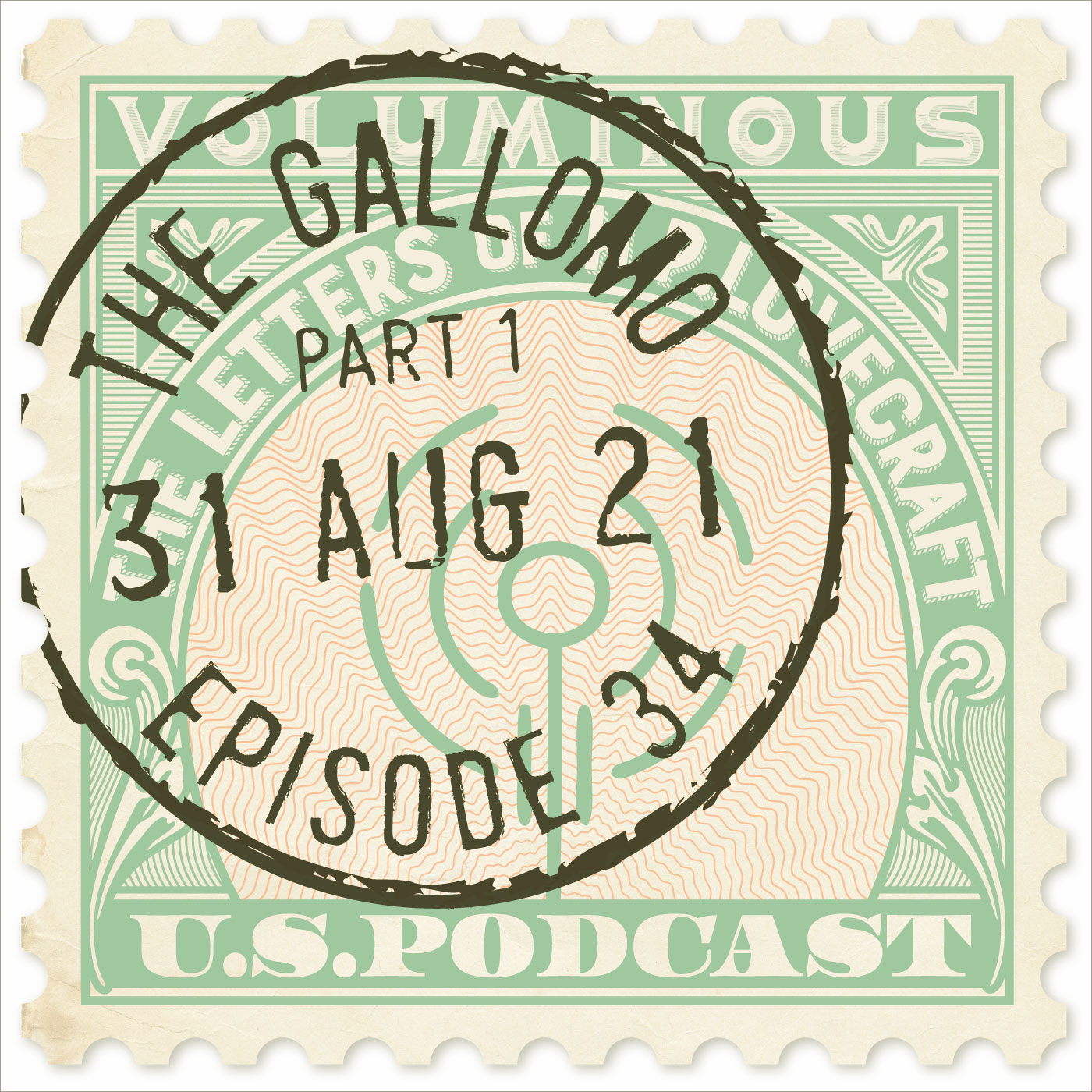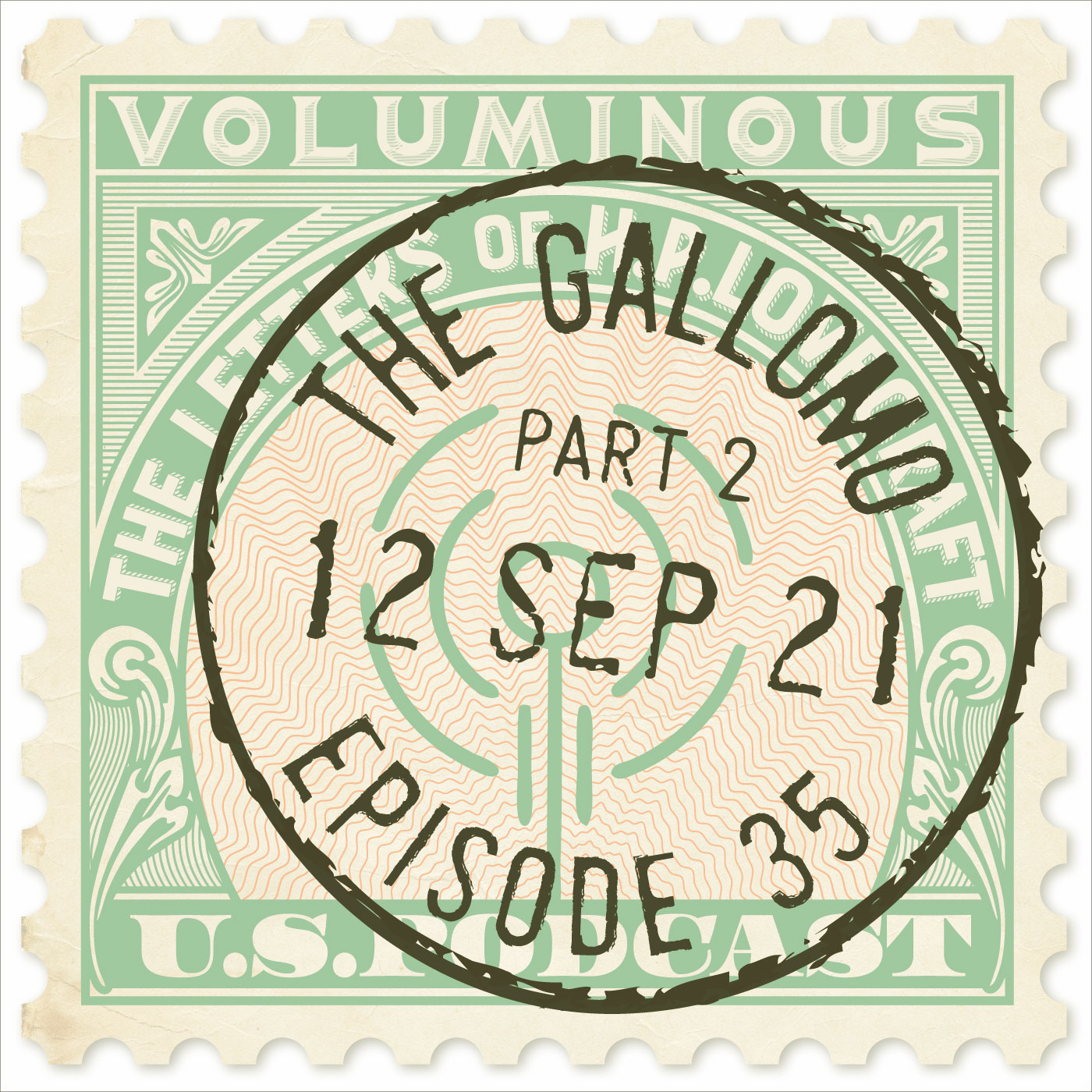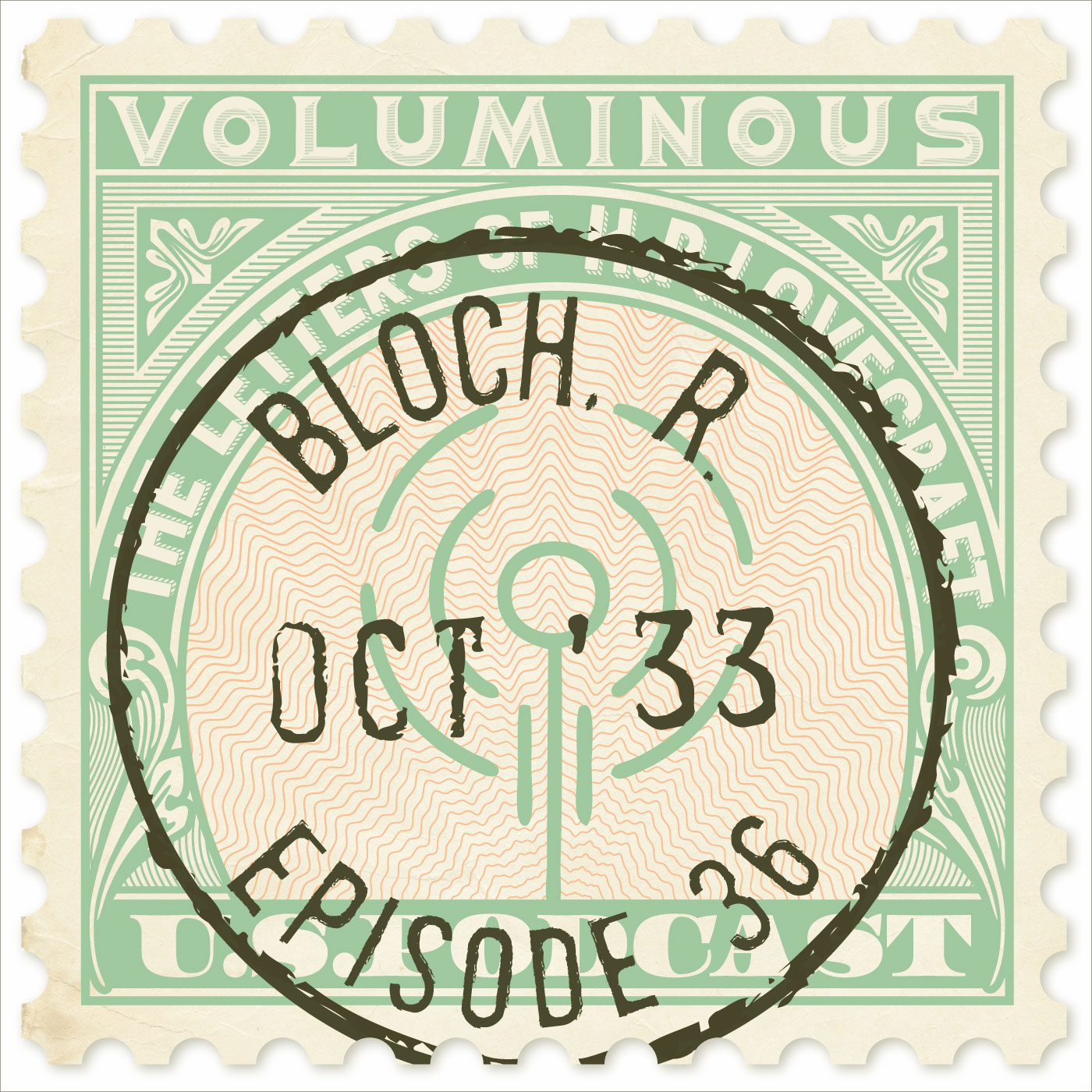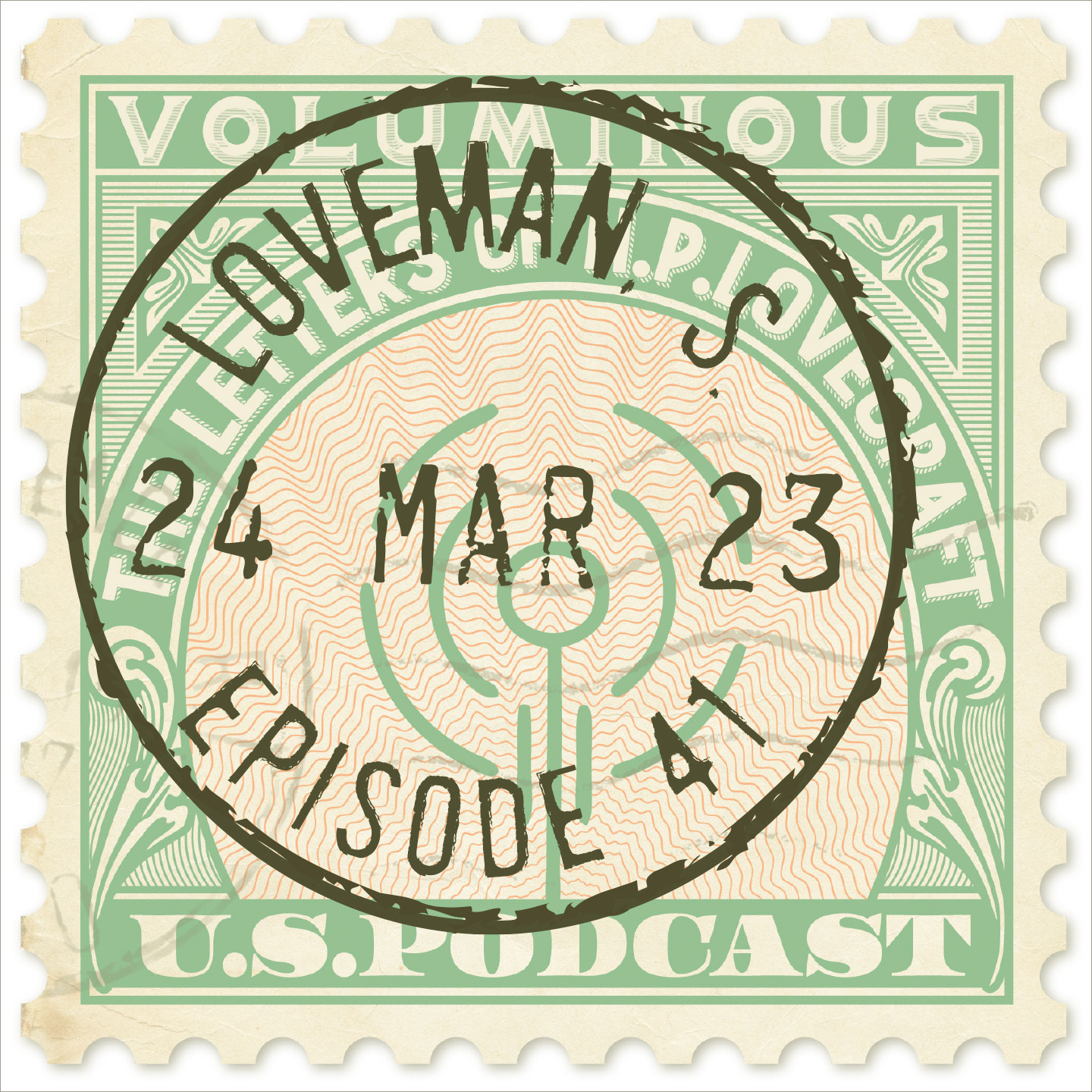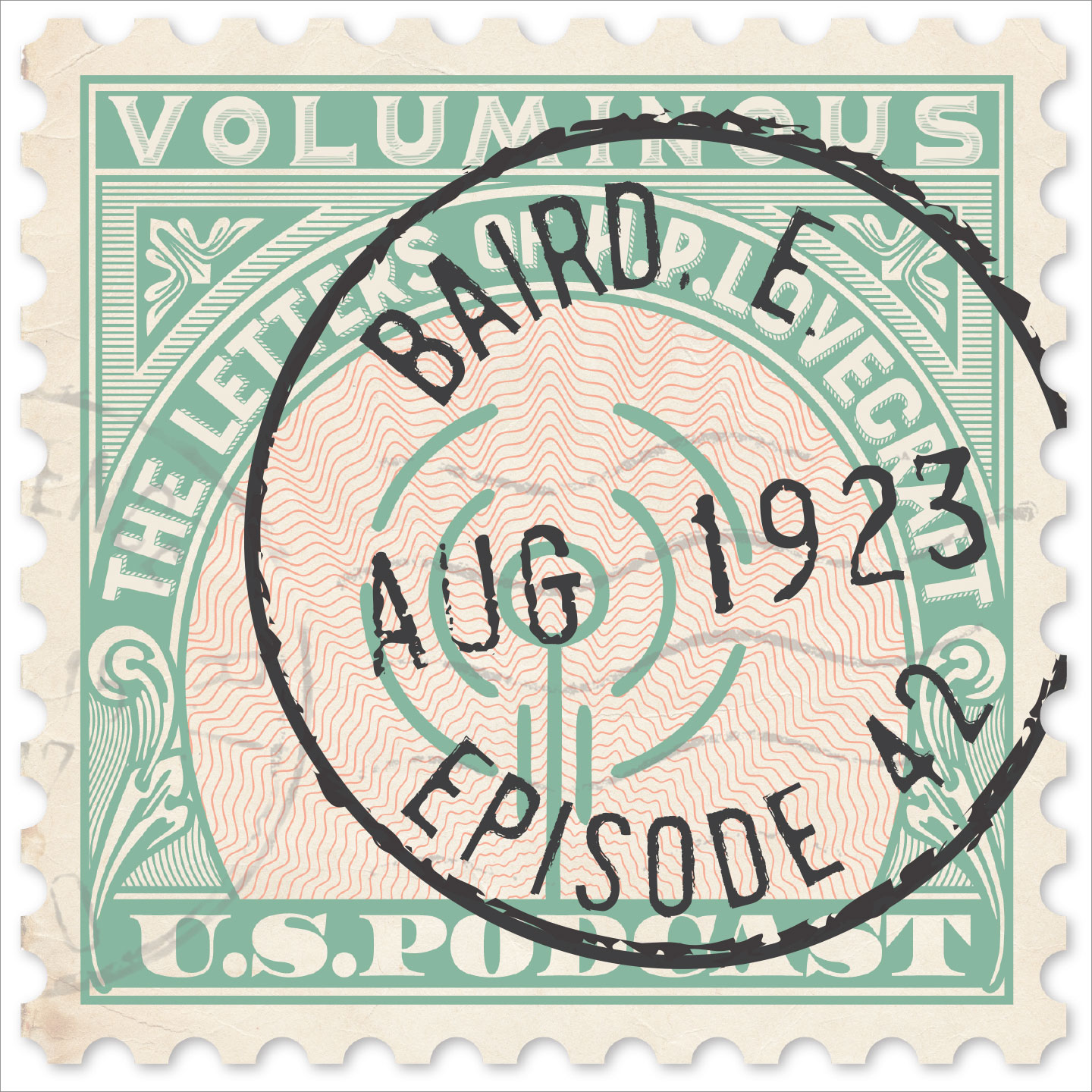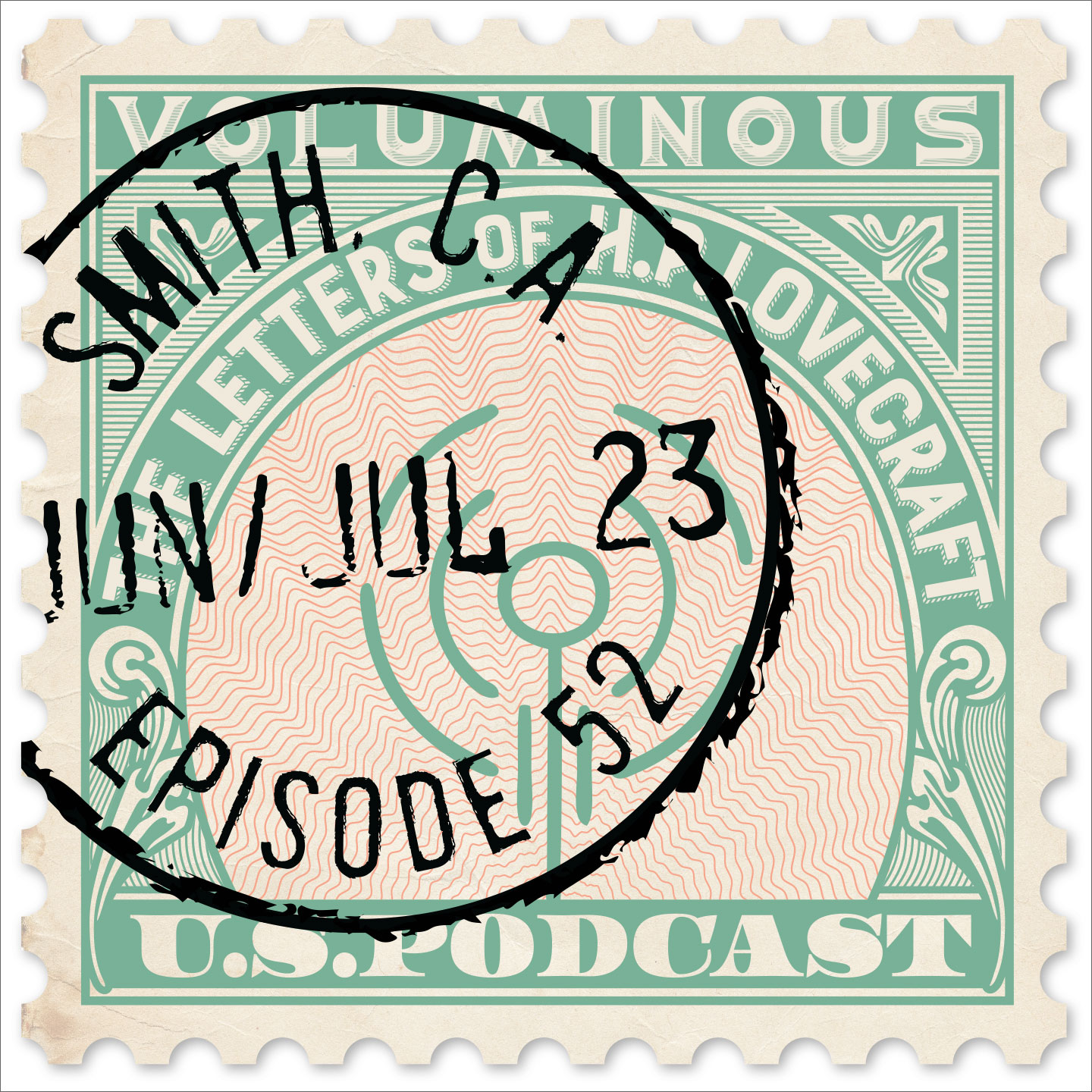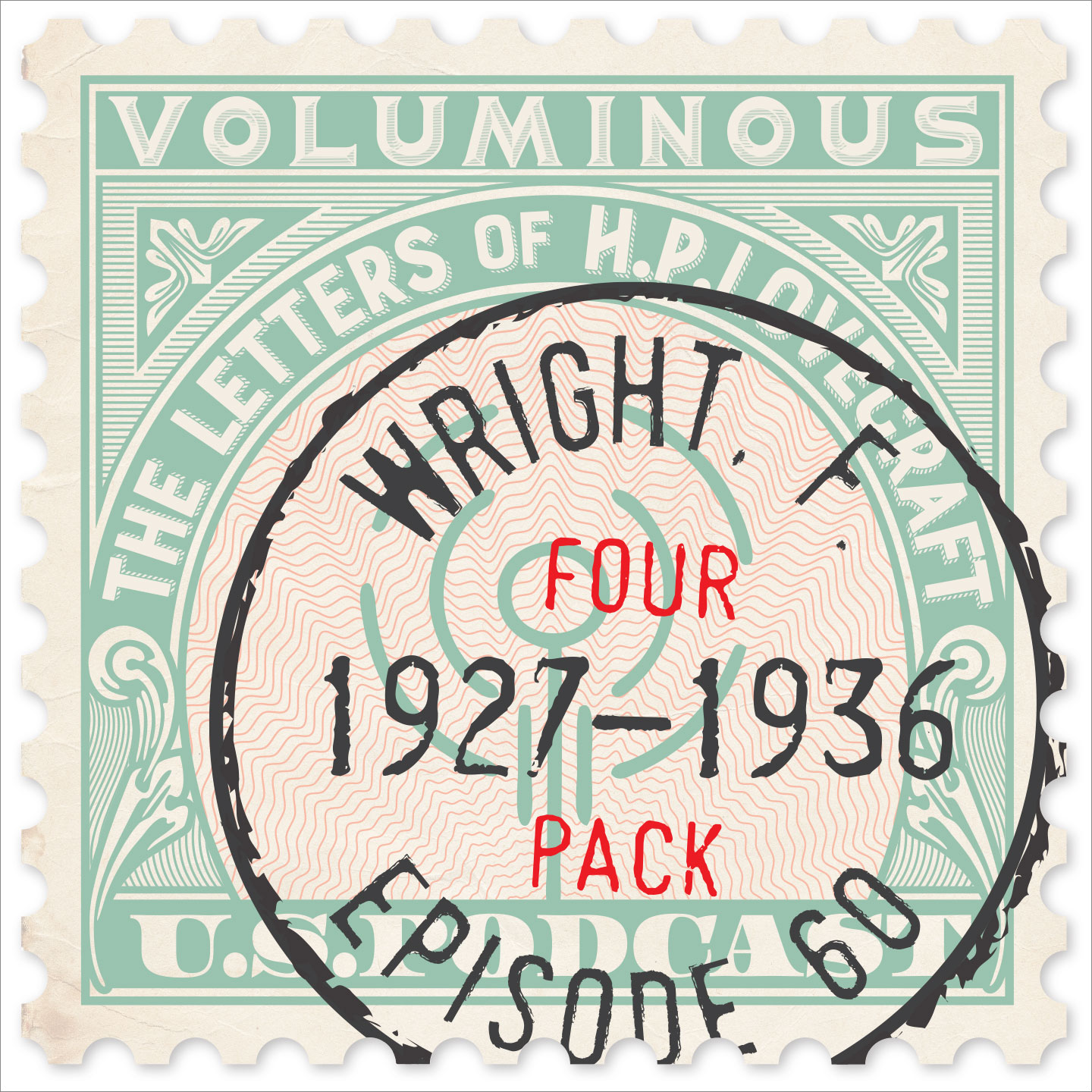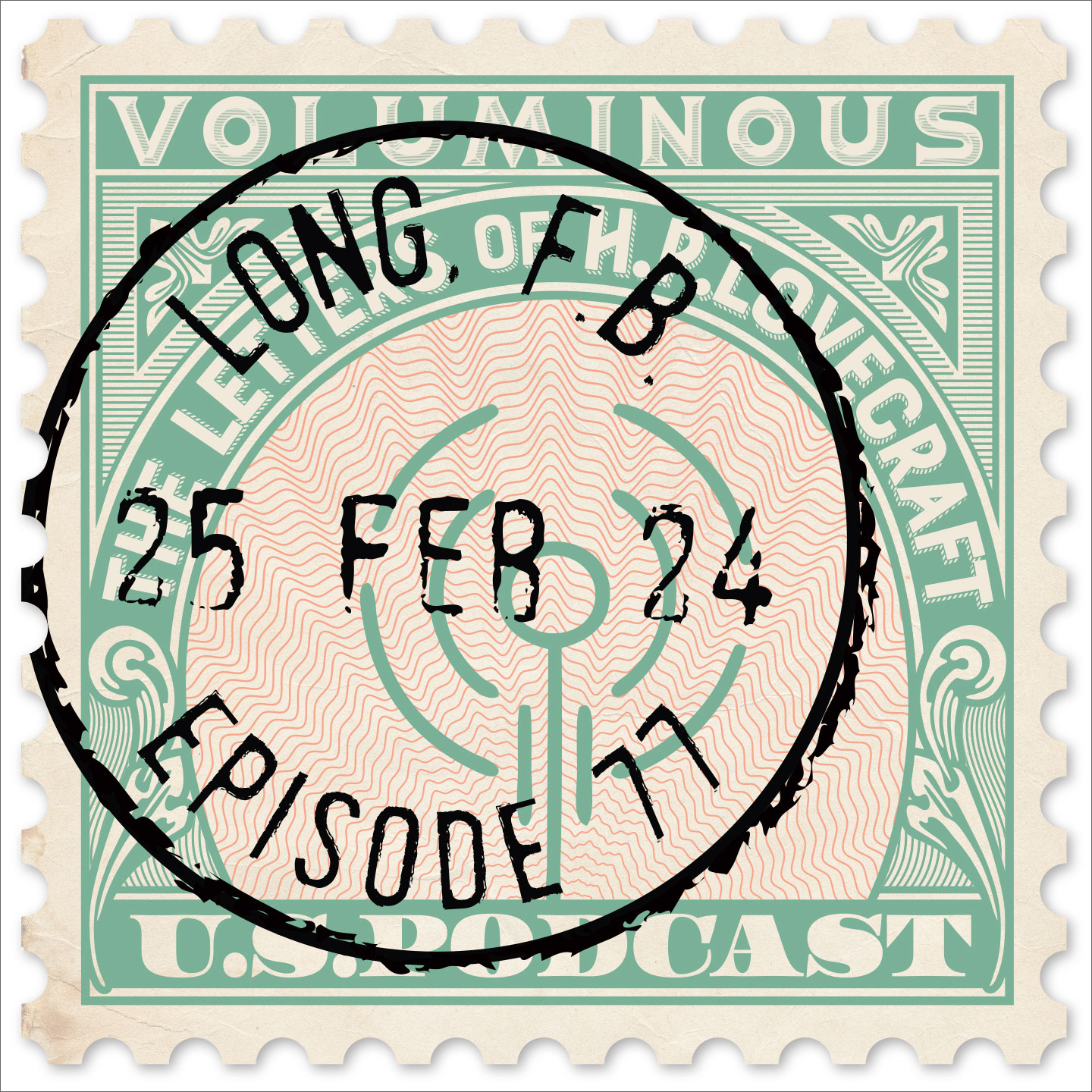
In addition to his classics of horror fiction, it is estimated that Lovecraft wrote 100,000 letters — or roughly 15 every day of his adult life — ranging from one-page diaries to seventy-page diatribes. Perhaps 20,000 of those letters have survived, in the hands of private collectors and at the John Hay Library in Providence.
In each episode of this podcast, we'll read one of these letters (or part of it) and then discuss it. In his letters HPL reveals an amazing breadth of knowledge of philosophy, science, history, literature, art and many other subjects, and forcefully asserts some highly considered opinions (some of which can be upsetting).
And of course his letters offer a fascinating window into his personal life and times. Although we've been working with Lovecraftian material for over 30 years, we still find interesting new things in his letters, and while we don't claim to be experts we look forward to sharing them with a wider audience.
Subscribe via iTunes, Stitcher or wherever you get podcasts! Or listen right here!
RSS Feed- Episode 63
- Posted August 1, 2021
A Symphony of Galpin
A letter from June 24, 1933 to one of HPL's oldest friends, Alfred Galpin. HPL talks about his recent move to his new home at 66 College Street, and describes a music festival he attended with his aunt Lillian a couple of weeks prior. Galpin was a composer, and we are very proud to include a new rendition of Galpin's "Lament for HPL" orchestrated by Reber Clark. And be sure to check out the virtual re-creation of the 1933 Providence Spring Festival of Music!
Music by Troy Sterling Nies. Thanks to Hippocampus Press for their Letters to Alfred Galpin and Others, with all its great footnotes and bonus material. Special thanks to Rebecca Paiva and Eric Parks for doing library research for us in Providence. Thanks to Peter L. Boonshaft and Chris Wilhjelm for sharing their expertise on the Goldman Band. And a very special thanks to Reber Clark for his amazing orchestration of Galpin's "Lament for HPL".

 At left is HPL's drawing of his new flat. The Brown Digital Repository has this letter available in its collection, and you can see HPL's drawing of the front of the house and the obliterating stains on the paper there.
At left is HPL's drawing of his new flat. The Brown Digital Repository has this letter available in its collection, and you can see HPL's drawing of the front of the house and the obliterating stains on the paper there.
Seen at right is one of our favorite photos of HPL, just barely recognizable leaning against the doorway of his new home at 66 College Street.
Below is a map from the 1918 atlas of Providence with the location of 66 College highlighted, along with the garden shed where all the neighborhood cats liked to sun themselves clearly visible from the west-facing windows of HPL's study. The building south of Lovecraft's was 64 College Street, which was the house of the Phi Delta Theta fraternity. (In "The Haunter of the Dark" the fraternity brothers can see poor dead Robert Blake through the windows at the back of this house.) The building just north of HPL's house was known as "The Paxton" when this map was drawn, but by 1933 had been renamed "The Arsdale". It was a boarding house where Lovecraft and his aunt Lillian often had their holiday meals.
For more about 66 College Street, check out essays by Kenneth W. Faig, Jr. and David E. Schultz in Lovecraft Annual #9 (2015) from Hippocampus Press.

Robert H. Barlow snapped photos of HPL's study at 66 College Street in 1937, and Arkham House published two of them in Marginalia in 1944. At left is the view of the south wall, showing the windows in the front of the building. On top of the bookcase on the left you can see Lovecraft's bust of John Milton, which makes an appearance in "The Whisperer in Darkness". The door to HPL's bedroom stands ajar, revealing HPL's beloved small-paned windows by the shadow of the muntins cast on the curtain. At right is the view of the west wall, with HPL's desk positioned under the window on the right. This window commanded a wonderful view of downtown Providence at sunset. Hanging over the fireplace would appear to be the marine painting done by Lovecraft's mother. The door just visible to the right of the bookcases was to a closet.

 Just a few days before she broke her ankle, Aunt Lillian and Lovecraft attended the Spring Festival of Music. The newspaper clippings that HPL included with this letter did not survive, but stalwart HPLHS members Rebecca Paiva and Eric Parks went to the Providence Public Library and found all the news coverage from the Evening Bulletin and Providence Journal on microfilm. Shown here is some of the major headline coverage, but you can download a huge 36-page PDF of all the articles here. Somewhere in one of the photos HPL and his aunt are seen from behind. The ones from the microfilm are pretty blurry, but the library also had this much clearer photo of the event, although it's not one that appeared in the newspaper. If you can find HPL and Lillian, let us know!
Just a few days before she broke her ankle, Aunt Lillian and Lovecraft attended the Spring Festival of Music. The newspaper clippings that HPL included with this letter did not survive, but stalwart HPLHS members Rebecca Paiva and Eric Parks went to the Providence Public Library and found all the news coverage from the Evening Bulletin and Providence Journal on microfilm. Shown here is some of the major headline coverage, but you can download a huge 36-page PDF of all the articles here. Somewhere in one of the photos HPL and his aunt are seen from behind. The ones from the microfilm are pretty blurry, but the library also had this much clearer photo of the event, although it's not one that appeared in the newspaper. If you can find HPL and Lillian, let us know!
 One of the photos from the newspaper coverage was colorized and used for this postcard. The concert was held at the Benedict Temple to Music in Roger Williams Park, built in 1922. The main musical act was the Goldman Band, one of America's premier concert bands, directed by founder Edwin Franko Goldman. Goldman loved to share the fun of music, and encouraged audiences to whistle or sing along during concerts. He wrote whistling parts into some of his marches. Del Staigers was the featured cornet soloist, and Metropolitan Opera contralto Rose Bampton sang a number of songs. There were also two local choirs: the Providence Festival Chorus and the Verdandi Male Chorus. As far as we know, no recording was made of the actual performance, but there are recordings of most of the songs. We have prepared a virtual replica of the concert using the most appropriate recordings we could find, and you can listen to the whole thing here!
One of the photos from the newspaper coverage was colorized and used for this postcard. The concert was held at the Benedict Temple to Music in Roger Williams Park, built in 1922. The main musical act was the Goldman Band, one of America's premier concert bands, directed by founder Edwin Franko Goldman. Goldman loved to share the fun of music, and encouraged audiences to whistle or sing along during concerts. He wrote whistling parts into some of his marches. Del Staigers was the featured cornet soloist, and Metropolitan Opera contralto Rose Bampton sang a number of songs. There were also two local choirs: the Providence Festival Chorus and the Verdandi Male Chorus. As far as we know, no recording was made of the actual performance, but there are recordings of most of the songs. We have prepared a virtual replica of the concert using the most appropriate recordings we could find, and you can listen to the whole thing here!
If you'd like to listen without all the visuals, the concert is also available on SoundCloud.
In his memoir, Galpin mentions a couple of other pieces of music related to HPL. Galpin says that the only piece of classical music that Lovecraft liked was the prelude to Act III of Lohengrin by Richard Wagner. HPL thought it was "brassy", but it is a pretty spectacular piece, and you can hear it in the video above left! Galpin also tells a story of how he was playing a record of famed pianist Vladimir de Pachmann playing Chopin's Nocturne Opus 37 No. 2 in G major, and how it put HPL to sleep. Galpin wrote: "He soon awoke with a start and the usual 'Where am I?' Pulling himself together, he told us his dream: he had been sitting on a terrace in a remote and savage spot overlooking the moonlit sea. Ten years later, after a visit to the abandoned convent at Valdemosa on the northern shore of Mallorca, where Chopin was living with George Sand when he wrote the nocturne, I had the pleasure of assuring Howard how amazingly his vision had captured the spirit and aspect of that romantic spot." Above right is that record! Maybe it will give you a spectacular dream as well!

 Pictured here are Alfred Galpin and his second wife, Isabella, in Parma, Italy in May of 1967. Galpin sent this photo to Frank Belknap Long. If you'd like to hear Daniel Walczak's solo piano rendition of Galpin's "Lament", head on over to Fedogan and Bremer. In addition to Galpin's piece, the CD contains music by another of HPL's composer friends, Harold Farnese, who wrote the only musical settings for HPL's poetry personally approved by Grandpa himself. Below, we're very proud to present for your repeated listening pleasure, Reber Clark's symphonic adaptation of Galpin's "Lament for H.P.L." (Reber has graciously granted permission for us to make this track available as a free download to our listeners, but he retains all rights to the arrangement and performance.)
Pictured here are Alfred Galpin and his second wife, Isabella, in Parma, Italy in May of 1967. Galpin sent this photo to Frank Belknap Long. If you'd like to hear Daniel Walczak's solo piano rendition of Galpin's "Lament", head on over to Fedogan and Bremer. In addition to Galpin's piece, the CD contains music by another of HPL's composer friends, Harold Farnese, who wrote the only musical settings for HPL's poetry personally approved by Grandpa himself. Below, we're very proud to present for your repeated listening pleasure, Reber Clark's symphonic adaptation of Galpin's "Lament for H.P.L." (Reber has graciously granted permission for us to make this track available as a free download to our listeners, but he retains all rights to the arrangement and performance.)





